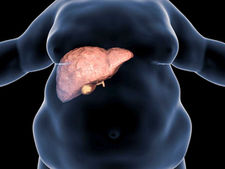
Sports Injuries
Sports is an activity that increases the body's organic resistance, improves the physiological capacity of the systems, and protects and maintains this capacity. However, not making enough preparations before starting sports causes injuries. Among the areas exposed to sports trauma, the knee joint ranks first with 32.9%. After the knee joint, it is the most common injury during sports; It is seen in the ankle, hip and groin area, shoulder joint, foot and thigh area, spine, elbow joint, wrist and hand. Sports injuries occur when a part or the whole of the body encounters a force greater than normal and exceeds the limits of endurance. Common conditions are as follows: Muscle, ligament, tendon tears, Head trauma, Tennis/golfer's elbow, Baseball player's finger, Joint dislocations, Tendinitis, Sprains.
What are the Diagnostic Methods for Sports Injuries?
To diagnose a sports or other musculoskeletal injury, the doctor asks when and how the injury occurred and what activities the person has been involved in recently or in their daily routine. Diagnostic methods include x-ray, computerized Tomography (CT) scans, magnetic resonance imaging (MRI), arthroscopy (viewing the joint with a small microscope inserted into it), electromyography (recording the electrical currents created by a muscle in motion).
How does the treatment process proceed in sports injuries?
Immediate treatment for almost all sports injuries includes rest, ice, compression and elevation. The injured area is rested immediately to minimize internal bleeding and swelling and to prevent the condition from getting worse. By causing the vessels to narrow, ice helps limit inflammation and reduce pain. Covering the injured area with tape or an elastic bandage (compression) and elevating the injured area above heart level (elevation) helps limit swelling. Treatment of injury in sports is carried out with conservative or surgical treatment depending on the damage and its location and severity. It is the cold treatment that should be applied in the first intervention. The aim of cold treatment is to prevent swelling and keep internal bleeding and inflammation (pain) under control. Physical therapy: People can return to their daily life activities more easily and quickly after injury with electrotherapy, hot-cold application, and appropriate exercise selection accompanied by a physiotherapist throughout the entire process. Conservative treatment; The extremity is rested with bandage, splint, circular cast and orthosis. Painkillers and anti-edema medications are given. Surgical treatment; Surgical treatment is performed in some sports accidents. Meniscus injuries, cruciate ligament ruptures, cartilage lesions), injection treatments (such as PRP, stem cell applications), muscle tendon and ligament repair play an important role. Arthroscopic surgery for the area requiring surgical intervention is frequently used in the treatment of intra-articular injuries in sports, especially in the knee joint, hip, ankle, elbow, wrist joints and shoulder joints. Despite all these accident risks and consequences, it should be known that; We should not give up sports and movement in our lives. Taking precautions against accident risks and doing sports consciously reduces the rate of injury. The points that need to be taken into consideration to prevent injuries in sports are as follows: Sports performed must be suitable for climatic conditions. It is essential to have health checks before starting sports. In fact, adequate warm-up exercises and stretching exercises should be done before exercising. A neat It is one of the most important factors of doing sports on the ground.
FOR INFORMATION AND APPOINTMENT, YOU CAN LEAVE YOUR NUMBER OR ASK OUR EXPERTS
YOU CAN LEAVE YOUR NUMBER FOR INFORMATION AND APPOINTMENT AND ASK QUESTIONS TO OUR EXPERTS



-04.png)
-06.png)
-05.png)
-08.png)
-07.png)























